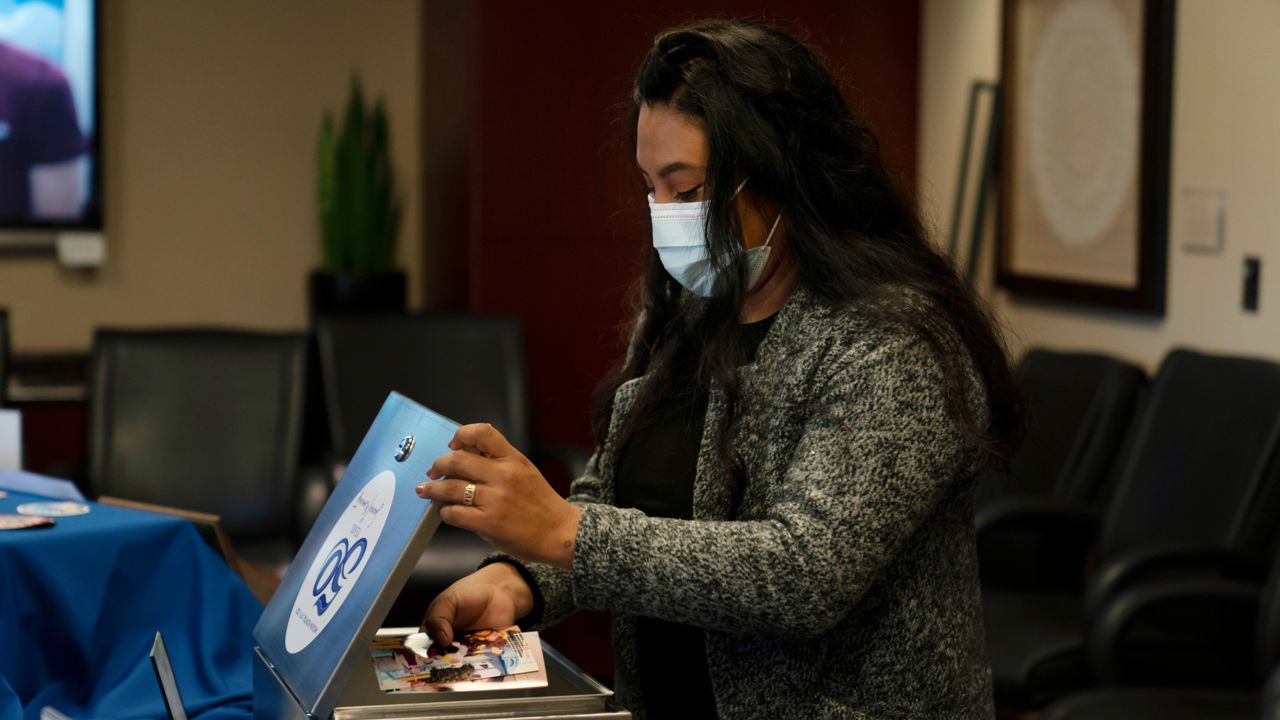SANTA ANA, Calif. (CNS) — Orange County's COVID-19 hospitalizations continued to climb following the Christmas holiday weekend, according to data updated Monday by the Orange County Health Care Agency.
The number of hospitalizations zoomed up from 217 on Thursday to 282 as of Monday, with the number of intensive care unit patients increasing from 58 to 66. It was the agency's first update since Thursday.
"For sure that's a concern," Orange County CEO Frank Kim said of the rise in hospitalizations in the four-day period. "That's up by about 25% (since Thursday)."
The county has 24% of its ICU beds available and 67.8% of its ventilators. Of those hospitalized, 87% are unvaccinated, and 88% of those in ICU are also not inoculated.
"Our hospital rates are still manageable — that's what I'm hearing," Kim said.
But the admissions are up 40% week over week, Kim said.
Andrew Noymer, an epidemiologist and UC Irvine professor of population health and disease prevention, concurred.
"The hospital number is what's bothering me," Noymer said. "It's a significant increase from last week. It's too early to say the sky is falling and it's lower than last summer's peak, but I'd like to see it go back down to the 200 level, which is not going to happen, but I'd still like to see it."
The surge is part of the "partly inevitable" result of the more contagious omicron variant, Noymer said.
"Omicron is explosive, no doubt about it," Noymer added. "It does appear to be milder for most people, but the unvaccinated or an unlucky few, particularly elderly people, just watch out."
Noymer also pointed out that the air travel volumes are about at 2019 levels and that will aid in the spread.
"It's not just travelers, though, because it's everywhere at this point. We're in for a tough few weeks," Noymer explained.
The county logged 6,475 new cases since Thursday, upping the cumulative total to 329,025. In addition, the county logged 13 more fatalities, all of which occurred this month and last month, raising the cumulative to 5,877.
Of the fatalities logged Monday, nine occurred this month, raising December's death toll to 30. The remaining occurred in November, raising that month's death toll to 101.
October's death toll stands at 126, 196 for September and 182 for August.
In contrast, the death toll before the more contagious delta variant fueled a summer surge was 31 in July, 19 for June, 26 for May, 46 for April, 202 for March and 620 for February.
January 2021 remains the deadliest month of the pandemic with a death toll of 1,596, ahead of December 2020, the next deadliest at 985.
Despite high levels of vaccination among seniors, three of the fatalities were skilled nursing facility residents and one was an assisted living facility resident. So far during the pandemic, 1,218 of the fatalities were skilled nursing facility residents and 647 were assisted living facility residents.
Of the 62,291 Orange County residents 85 and older, 54,734 are vaccinated. Of those 75 to 84 years old, 137,015 are vaccinated and 9,424 are unvaccinated. Of those 65 to 74, 253,909 are vaccinated and 28,746 are unvaccinated.
The adjusted daily case rate per 100,000 is at 10.2 and the positivity rate is 3.3%, while it's 3.5% in the health equity quartile category, which measures the rate among the lower-income communities hardest hit by the pandemic.
The county's deputy health officer told reporters Thursday that the new and highly contagious omicron variant is likely much more prevalent in the county than the two cases confirmed so far.
"I suspect the projected data of actual prevalence of omicron is probably above 60%" of the county's cases, Dr. Regina Chinsio-Kwong said in a weekly call with reporters.
The data lags about a week to 10 days, she said.
"We suspect most of those are omicron," Chinsio-Kwong said of the uptick in COVID-19 infections. "There will still be a mixture of delta."
Residents should do all they can to avoid getting infected by using a "snug and fit" face covering when indoors or congregating in large crowds or getting vaccinated, Chinsio-Kwong said.
Even if the new variant presents milder symptoms, there's just as much reason to try to prevent transmission, she said.
"Every time it infects an individual, it has a chance to mutate," Chinsio-Kwong said. "We need everybody to take precautions and to limit the spread of COVID."
Testing has been on the rise, she said.
"We know there's a lot more testing going on because antigen tests are flying off the shelves, and antigen tests are not reported," Chinsio-Kwong said.
Parents should be on the lookout for more testing done before students return to classes following the winter break, she added.
The case rate per 100,000 for the unvaccinated is 30.9 as of Dec. 18, the most recent statistics available. That's up from 25.4 on Dec. 11.
For the vaccinated, the case rate is 6.8, up from 3.8 as of Dec. 11.
Studies show that Pfizer and Moderna vaccines are at least 70% effective against infection for the omicron variant, Chinsio-Kwong said, adding that they nearly always protect recipients from hospitalization or death.
The number of fully vaccinated residents in Orange County increased from 2,295,286 to 2,314,232, according to data released Thursday. That represents 67% of the county, Chinsio-Kwong said.
That number includes an increase from 2,144,648 to 2,162,816 of residents who have received the two-dose regimen of vaccines from Pfizer or Moderna.
The number of residents receiving the one-dose Johnson & Johnson vaccine increased from 150,638 to 151,416. The county has dispensed 768,412 booster shots.



